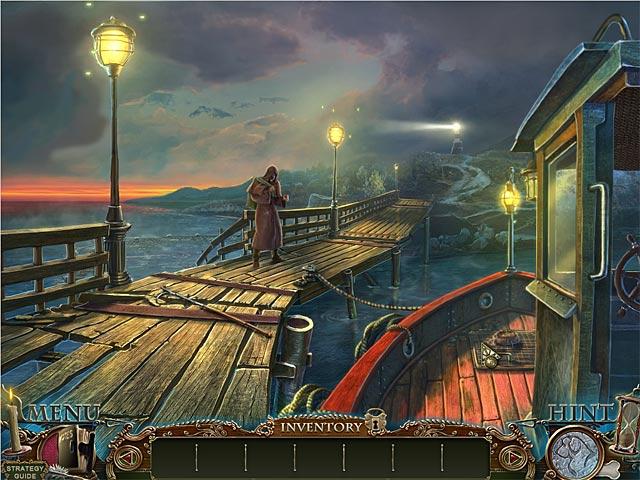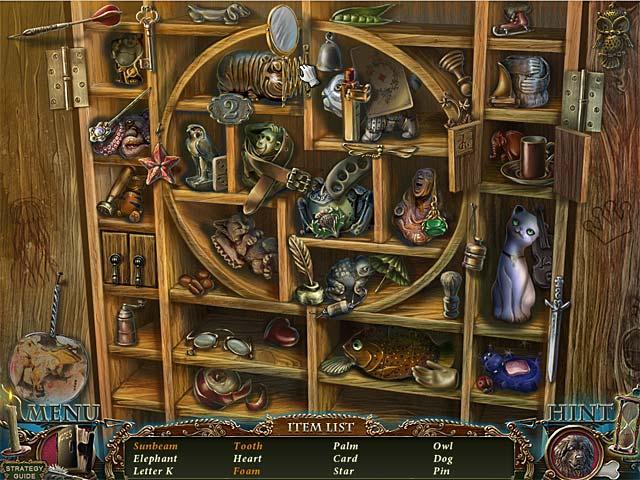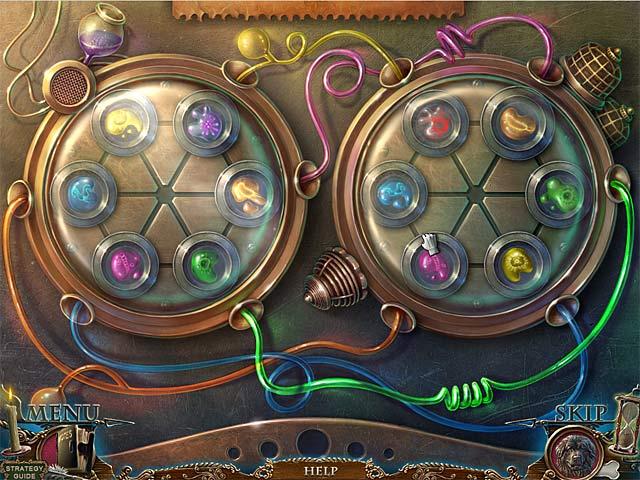- Wondering how to get Monopoly GO! free rolls? Well, you’ve come to the right place. In this guide, we provide you with a bunch of tips and tricks to get some free rolls for the hit new mobile game. We’ll …
Best Roblox Horror Games to Play Right Now – Updated Weekly
By Adele Wilson
Our Best Roblox Horror Games guide features the scariest and most creative experiences to play right now on the platform!The BEST Roblox Games of The Week – Games You Need To Play!
By Sho Roberts
Our feature shares our pick for the Best Roblox Games of the week! With our feature, we guarantee you'll find something new to play!Type Soul Clan Rarity Guide – All Legendary And Common Clans Listed!
By Nathan Ball
Wondering what your odds of rolling a particular Clan are? Wonder no more, with my handy Type Soul Clan Rarity guide.
Dark Tales: Edgar Allan Poe’s The Gold Bug Review
As a whole, the hidden object genre tends to rely largely on motifs of mystery. It should come as no surprise, then, that developer ERS Game Studios has a series of HOGs based off of the stories of Edgar Allen Poe. These adventures see you, the detective, aiding Poe’s recurring sleuth staple Dupin, the protagonist of some of the books in which these games are based, but who never actually appears in The Gold Bug.

There’s a stranger out to find you. Dark Tales — Awoo-hoo!
As a whole, the hidden object genre tends to rely largely on motifs of mystery. It should come as no surprise, then, that developer ERS Game Studios has a series of HOGs based off of the stories of Edgar Allen Poe. These adventures see you, the detective, aiding Poe’s recurring sleuth staple Dupin, the protagonist of some of the books in which these games are based, but who never actually appears in The Gold Bug.
As such, it is apparent from the get go that much leeway will be given to the interpretation of the source material. Nevertheless, the end result is a refined puzzle-heavy adventure game, though one that may fail to deliver the dark sensibilities one would expect from a game flaunting Poe within its title.
Like the story it emulates, Dark Tales: Edgar Allen Poe’s The Gold Bug begins with a harried letter sent from a man named Legrand. In it, Legrand urges his friend (in this case, Dupin) to visit his island home to discuss a matter so urgent that he dare not tell of it in a letter. Dupin enlists you to lend your detective skills to the situation, and the two of you sail off to the island and begin your investigation. Upon meeting Legrand, he reveals he believes he can locate the buried treasure of fabled pirate Captain Kidd, and that a Gold Bug that bit him holds the key. Apparently someone else agrees, as a bandit appears only to escape your capture, leaving you to try and discover his identity and help Legrand find the treasure.
From the start, the game makes great use of hand-drawn 2D art, both in-game and during cutscenes. While some hidden-object games insist on bringing 3D animations into 2D landscapes — many times to ill effect (we’re looking at you, Torment of Whitewall) — Dark Tales decides to fully embrace the 2D approach, creating fluid animations and characters so detailed that you may at times forget all the imagery never occupies the third dimension. During cutscenes, blur and focus effects create a sense of depth, and the environments you explore are filled with nuance and ambience. Dust floating through air glimmers in the light, fireflies flutter around hanging lanterns, clouds lazily move through the sky. And, of course, bugs are found crawling around everywhere, to the point where one wonders why somebody on the island hasn’t considered opening an extermination business. They’d make a killing.
The level of detail in the environments creates a vivid world to investigate, which is good, because the game features a large amount of exploration. Each area is rather open-ended, and in the vein of typical adventure games, you’ll be gathering items, combining them with other objects to create tools, and then looking over previous areas for spots in which to use them. This aspect of the game, along with the various puzzles you encounter, actually greatly outweighs the amount of time spent within hidden object scenes. This helps add more variety to the experience and gives the game a steady feeling of progression, two characteristics many HOGs struggle to achieve.
When you are tasked with finding objects within an isolated scene, you’ll be doing more than simply clicking away to match items to a list of words. Many of these scenes include objects that take steps to locate, like finding a lighter to ignite a candle, planting and growing a flower or digging up a clay vase to fill with water. Some events even require you to combine several pieces of scenery before revealing a needed item. You won’t always be searching for words, either, as some of these segments feature silhouettes of the objects you need to find rather than their corresponding words.
Story-wise, the game never is able to live up to its source material. While one expects certain variations from the plot to be made (i.e., removing Legrands’s freed slave sidekick, Jupiter), the game never comes close to creating the kind of dark themes of madness and mystery that the book delivers. Instead, you get a cookie-cutter “villain” to track, who pops in periodically to drop a clue, shoot a stray bullet or merely curse your investigation as you progress. Though, including Legrand’s newfoundland from the book as a clue-sniffing sidekick was a clever addition.
Thankfully, there is much more to keep you entertained than the story, as the puzzles you encounter outside of hidden object scenes are challenging and diverse. You’ll be sliding tiles of stained glass to reveal an image, guiding mechanical bugs through a maze, swapping colors around to match them to corresponding wires (which inexplicably helps you compare blood samples, who knew!) and matching up symbols with astrological signs. Sometimes you’ll be required to find a clue before completing a puzzle, like discovering hints written onto a fogged-up window before arranging the hands of a grandfather clock, or discovering the numeric combination nearby a locked-up item. It’s these little steps that demand a bit more time and thought, and help set the gameplay apart from run-of-the-mill hidden object/adventure mechanics.
Presentation-wise, the game comes across pretty slick, with animations peppered in so liberally that even the cursor itself has its own set of moving variations. A swirling gear rests on your arrow most of the time, with a blinking eye moving left and right to denote areas to investigate and a spinning globe replacing it when pointing towards an area to travel to (though the image on the globe oddly shows Paris, France). Within the game, menus are fixed with gold carvings and wooden bases, and a candle burns next to your handy notebook. Your K9 companion also blinks and pants in the bottom right hand corner, waiting for you to drag him objects to sniff so he can lend you more clues to aid in the investigation.
There are seven chapters to work through, taking you from the island’s town square and shipping dock to pirate ships, a light house, armory, and cave. Once completed, a bonus level is unlocked as well. There are three difficulty levels to choose from, allowing you to change the amount of hints and skips you get to use and alter the cool-down time between uses. If you really get stuck, there is a complete strategy guide included in the game, as well.
With top-notch 2D art and animation found throughout the entirety of the game, working your way through the world of Dark Tales: Edgar Allen Poe’s The Gold Bug is more than easy on the eyes. Add to that some creative adventure mechanics, inventive puzzles and an interesting take on hidden object scenes, and you’ve got a whole lot of good-looking sleuthing to chew on. Just don’t expect the plot to hold your attention as well as the game’s visual fidelity and gameplay. Still, with three levels of difficulty and 7 chapters to beat, as well as a bonus one unlocked upon completion, the game does offer a substantial amount of quality content to sift through.

The good

The bad
More articles...
Monopoly GO! Free Rolls – Links For Free Dice
By Glen Fox
Wondering how to get Monopoly GO! free rolls? Well, you’ve come to the right place. In this guide, we provide you with a bunch of tips and tricks to get some free rolls for the hit new mobile game. We’ll …Best Roblox Horror Games to Play Right Now – Updated Weekly
By Adele Wilson
Our Best Roblox Horror Games guide features the scariest and most creative experiences to play right now on the platform!The BEST Roblox Games of The Week – Games You Need To Play!
By Sho Roberts
Our feature shares our pick for the Best Roblox Games of the week! With our feature, we guarantee you'll find something new to play!Type Soul Clan Rarity Guide – All Legendary And Common Clans Listed!
By Nathan Ball
Wondering what your odds of rolling a particular Clan are? Wonder no more, with my handy Type Soul Clan Rarity guide.








 “
“ “
“